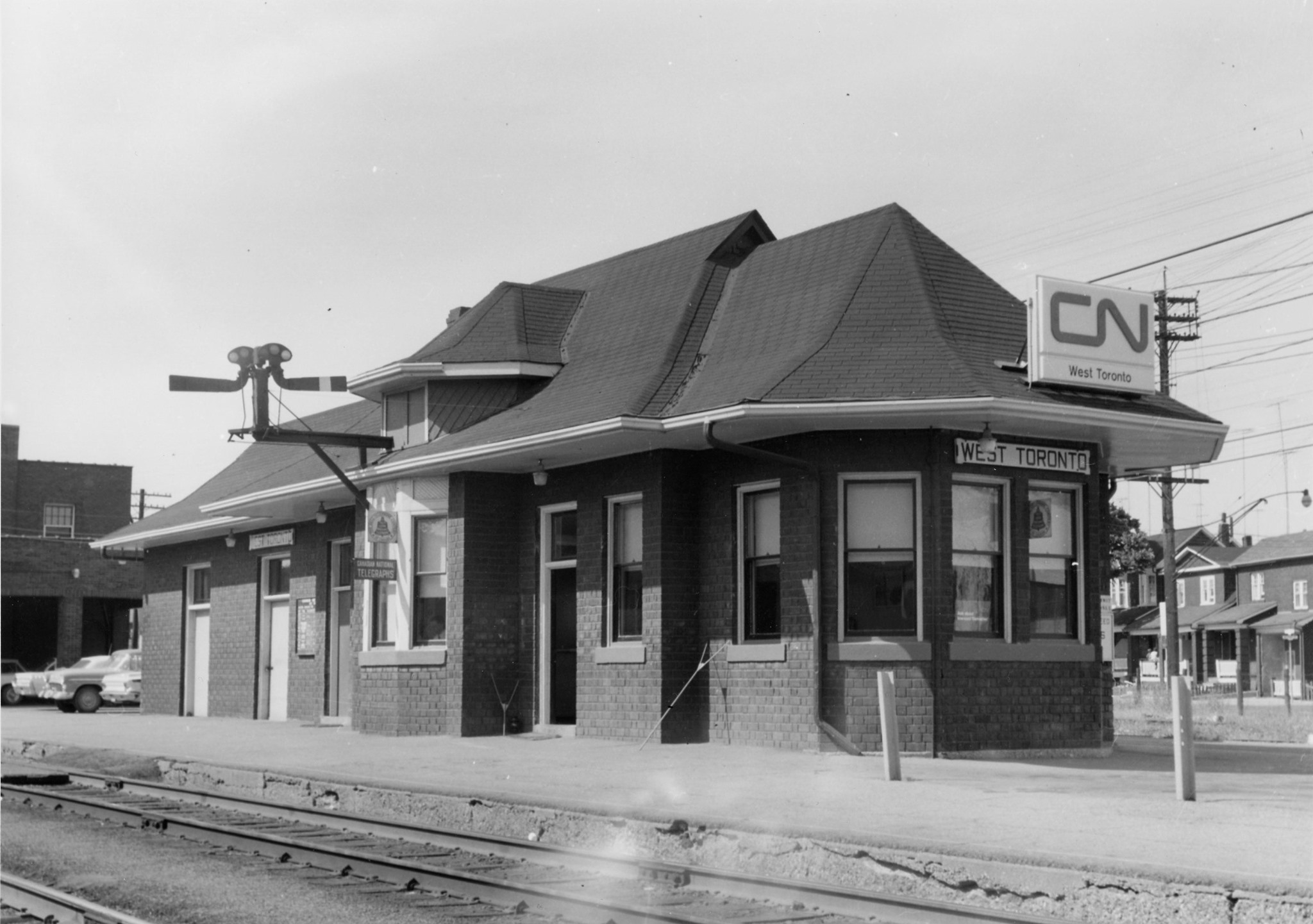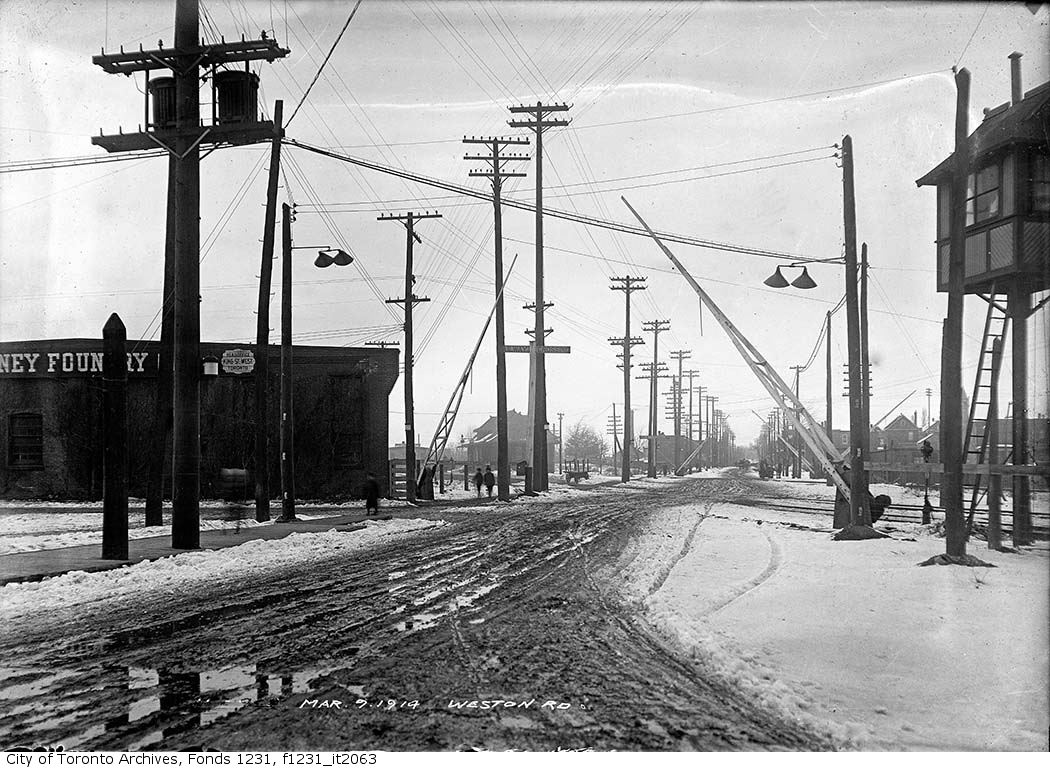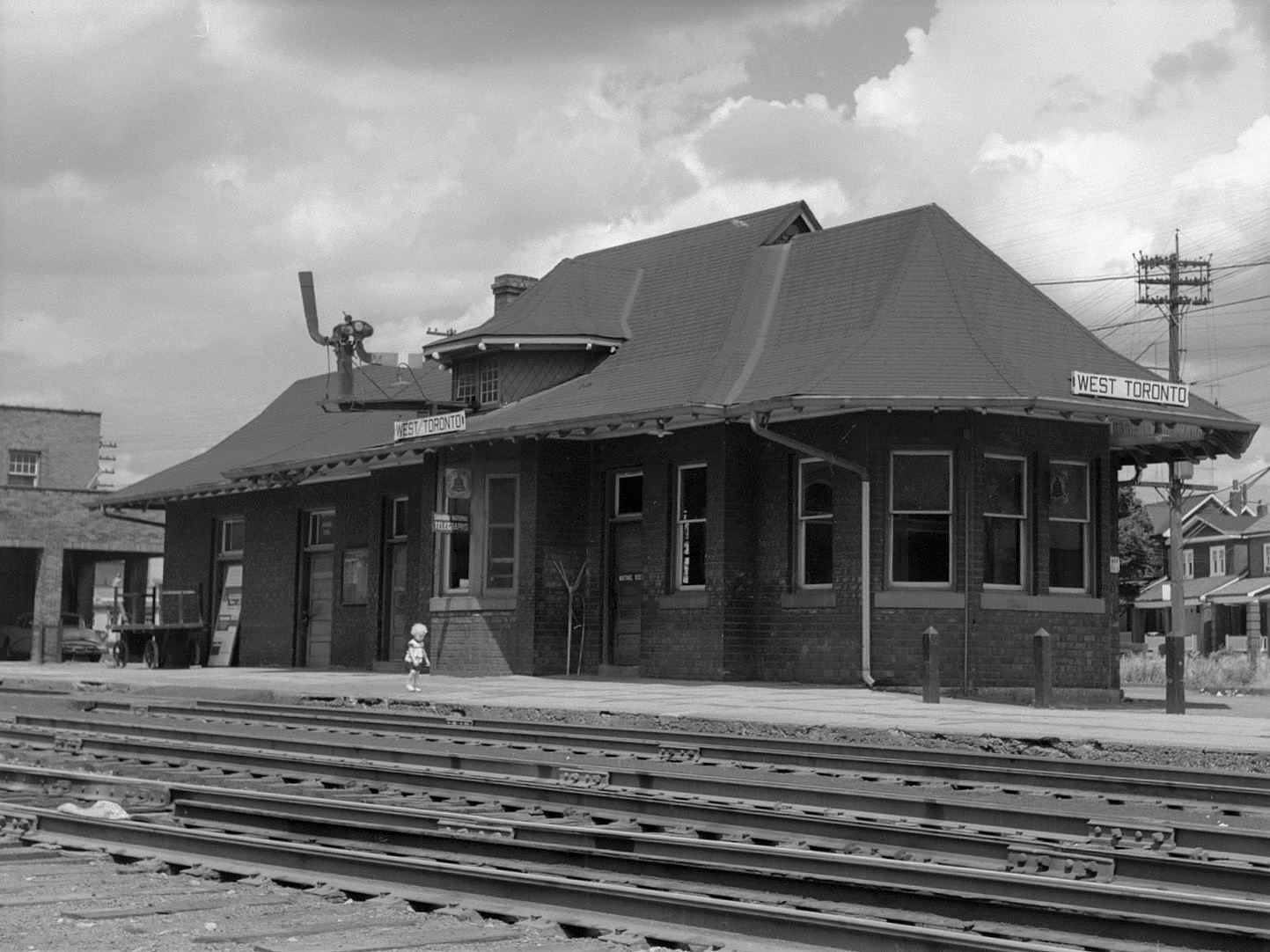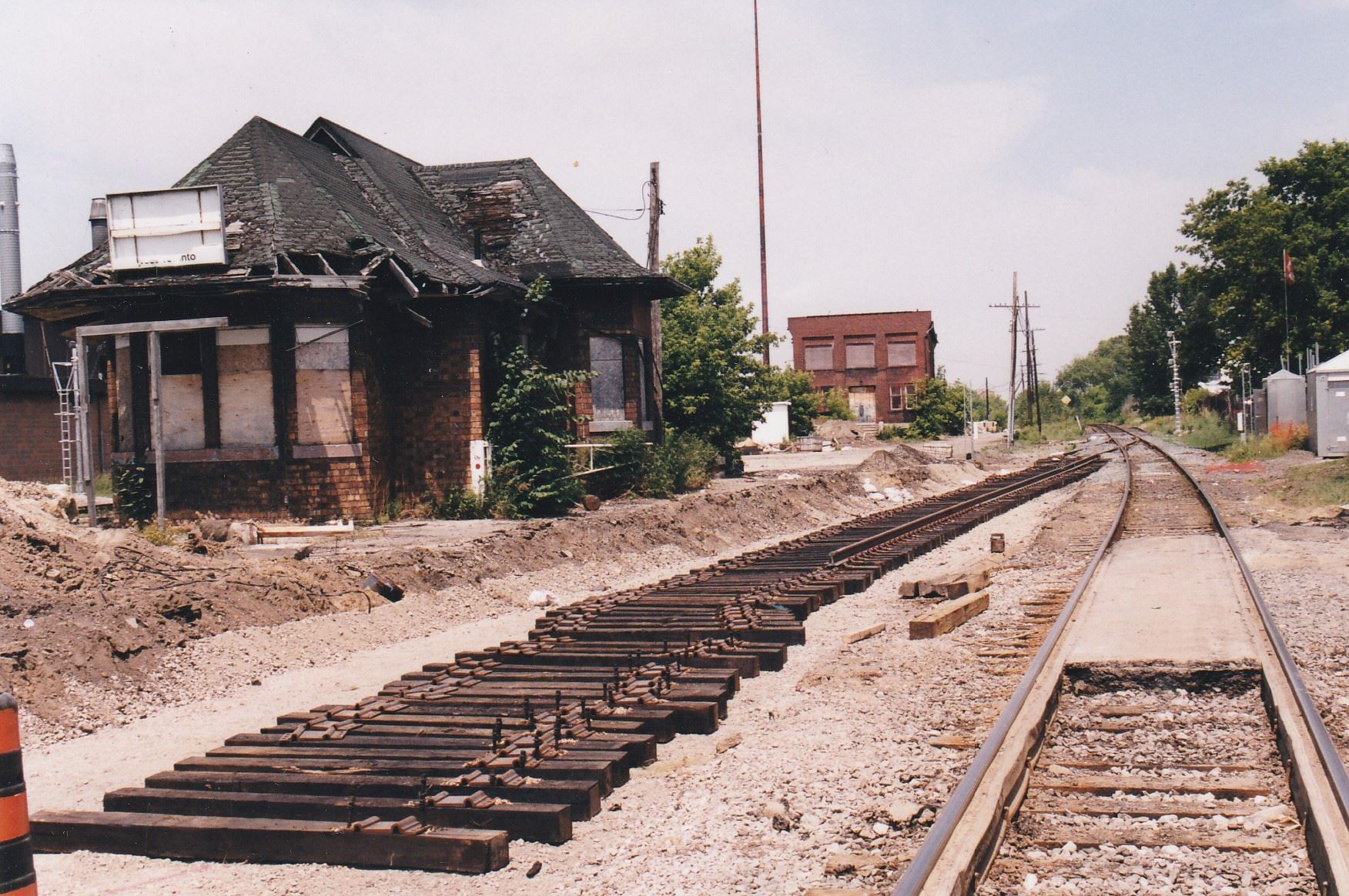Summary
Decades before the village of West Toronto was formed, the Grand Trunk Railway built its Carleton Station on the south side of St. Clair Avenue and west of Old Weston Road in 1855. As its name suggests, the station was immediately adjacent to the small unincorporated community of Carleton – now the Toronto neighbourhood of Carleton Village. No photos of this station are known to exist but it most likely followed one of the Grand Trunk’s early standard designs. This would have been a small, rectangular structure with either limestone, brick, or wooden walls. Up to four chimneys would have protruded from a simple pitched roof, each connected to a wood stove or fireplace for warmth during cold winters. The first train would have arrived at Carleton Station on October 18th, 1855, but service was only offered between Toronto and Brampton at that time as the railway was under construction. It was extended to Guelph, Stratford, and Sarnia over the next four years. The arrival of the railway greatly benefitted the local economy of Carleton Village and its population would grow to 150 residents by 1865.
Over the next two decades, numerous other railway companies would arrive in the vicinity of Carleton. The first to do so after the Grand Trunk was the narrow-gauge Toronto, Grey & Bruce Railway in the early 1870’s. An agreement between the two railways allowed the TG&B to lay a third rail inside those already owned by the Grand Trunk, thereby accommodating trains of both gauges on a single track. Early timetables show that the Toronto, Grey & Bruce also began serving passengers at the Grand Trunk’s Carleton Station once service began on July 17th, 1871, with a total of six TG&B trains stopping there per day from that point on. This arrangement would only last a short time as rail traffic congestion forced the TG&B onto its own right-of-way parallel to the Grand Trunk in 1875. The TG&B would continue to serve Carleton though its unknown whether they built their own station nearby. In any case, the Grand Trunk alone had a total of ten trains stopping at Carleton Station per day by 1877.
Just under a kilometre south of Carleton, the Credit Valley Railway attempted to squeeze its way along the west side of the Grand Trunk to access Toronto in the late 1870’s. This was followed shortly thereafter by the Ontario & Quebec Railway, a proxy of the Canadian Pacific Railway, crossing the Grand Trunk at grade and connecting with the Credit Valley Railway in the early 1880’s. This point would come to be known as West Toronto Junction, and a village by the same name would be established nearby in 1884 as more industry and railway employees moved in. The villages of Carleton, West Toronto Junction, and Davenport merged to form the Town of West Toronto Junction in 1889. The Grand Trunk Railway had already established a commuter service to West Toronto and as far north as Weston two years prior, taking advantage of the burgeoning local economy. To better serve the more rapidly growing communities south of Carleton and closer to the junction, a dedicated commuter shelter was built on the north side of the Old Weston Road crossing. This was less than half a kilometre south of the original Carleton Station, which continued to exist alongside the commuter stop – denoted as “Carleton, Weston Road” on timetables. A total of seven commuter trains stopped at both the commuter stop and the original station, in addition to a handful of regional trains which exclusively stopped at the original station.
The Grand Trunk’s commuter trains were short lived and ended at some point during the early 1900’s. In 1907, the Grand Trunk built its West Toronto Station on the north side of Old Weston Road where the commuter stop was previously located. It replaced both the commuter stop and Carleton Station which were removed at about the same time. The new station differed greatly from its predecessors in terms of architecture. Its exterior walls primarily made use of vitrified brick. The roofline was somewhat complex with a dormer above the bay window and a rounded section above the waiting room’s large polygonal bay. All parts of the roof were flared outwards at the eaves. While a fine example of railway architecture of the period, it was largely overshadowed by Canadian Pacific’s much larger West Toronto Station once it was replaced four years later. The Grand Trunk encountered financial difficulties through the early 20th century, culminating in its nationalization and subsequent absorption into the newly-formed Canadian National Railway in 1923. Owing to its position on a secondary line, the station would only see about nine trains per day by 1925 with very little increase over the following decades. Canadian National’s introduction of economical Budd Rail Diesel Cars on trains between Toronto, Stratford, and London in the postwar era would largely be responsible for an increase to sixteen trains per day at West Toronto by 1957. However, the popularization of automobiles and construction of numerous provincial highways during the same period would reverse this trend as passenger ridership decreased broadly. Service to West Toronto was reduced to nine trains by 1974, slightly increasing to ten after Canadian National’s passenger service was assumed by VIA Rail in 1977. The station was finally closed to passengers in 1989, after which it sat abandoned for a decade. Members of the West Toronto Junction Historical Society made numerous efforts to negotiate with Canadian National with the hope of preserving the station for its historical value and potentially readapting it into a passenger station in the future. Unfortunately, their efforts were not successful and West Toronto Station was torn down in August 1999. It was among the oldest surviving railway stations in Toronto at the time of its demolition.
The proposed St. Clair-Old Weston GO Station, to be built under the SmartTrack Stations Program, will be located on the opposite side of St. Clair Avenue from where the original Carleton Station was. Upon its expected opening in 2026 the new St. Clair-Old Weston GO will return direct passenger rail service to this part of the city for the first time in 37 years.
Condensed Station Info:
| Location: | Served By: | Current State: | Date Built: | Date Demolished: |
| Old Weston Road and Westport Avenue | Grand Trunk (1855 – 1923) Canadian National (1923 – 1977) VIA Rail (1977 – 1989) | Demolished | 1855 (First) 1907 (Second) | 1907 (First) 1999 (Second) |





